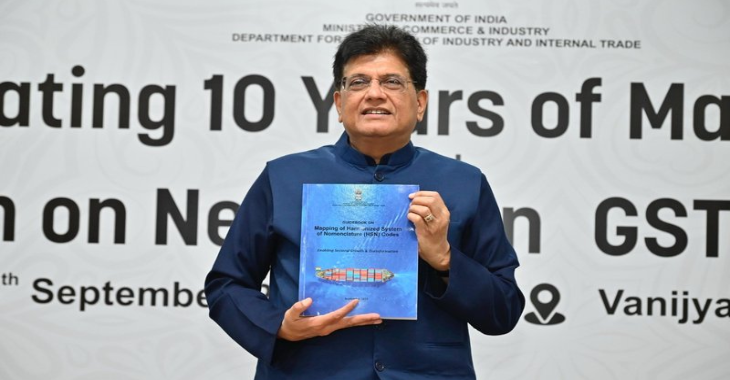In his Guidebook on Mapping of Harmonized System of Nomenclature (HSN) Codes, Union Commerce and Industry Minister Piyush Goyal assigned 12,167 product codes to 31 Central Government ministries and departments.
According to an official release, the guidebook uses a data-driven approach to identify specific custodians for each product code in order to facilitate commerce, encourage investment, and foster industrial progress.
In order to improve India’s ease of doing business and expedite regulatory procedures, the handbook designates the relevant ministry or department for each code.
The book was introduced by the minister during a celebration of the Make in India initiative’s tenth anniversary and a discussion about Next Gen-Reforms 2.0. It further stated that the guidebook will be the cornerstone for creating a robust and competitive manufacturing ecosystem.
Additionally, the handbook will facilitate more fruitful trade agreement talks that are in line with national economic interests and areas of expertise.
In order to address the problems of unmapped or incorrectly classified HSN codes, the Department for Promotion of Industry and Internal Trade reviewed the Allocation of Business rules, conducted value-chain and use-case analyses of each code, met with more than 300 ministries and departments one-on-one, and held extensive stakeholder consultations.
The guidebook is structured around three operating pillars and includes a special section called “How to Use the Guidebook?”
The first section on “Manufacture in India” seeks to improve worker capacities, fortify value chains, and harmonize sector-specific regulations. “Make for the World” and “Strengthen Brand India” are the other segments.
According to the most recent data from the Annual Survey of Industries (ASI), India’s manufacturing sector grew well in FY 24 as Gross Value Added (GVA) rose by 11.89 percent, up from 7.3 percent the year before.
Read More
Today, PM Modi will launch development projects in Gujarat valued at more than Rs 34,200 cr


